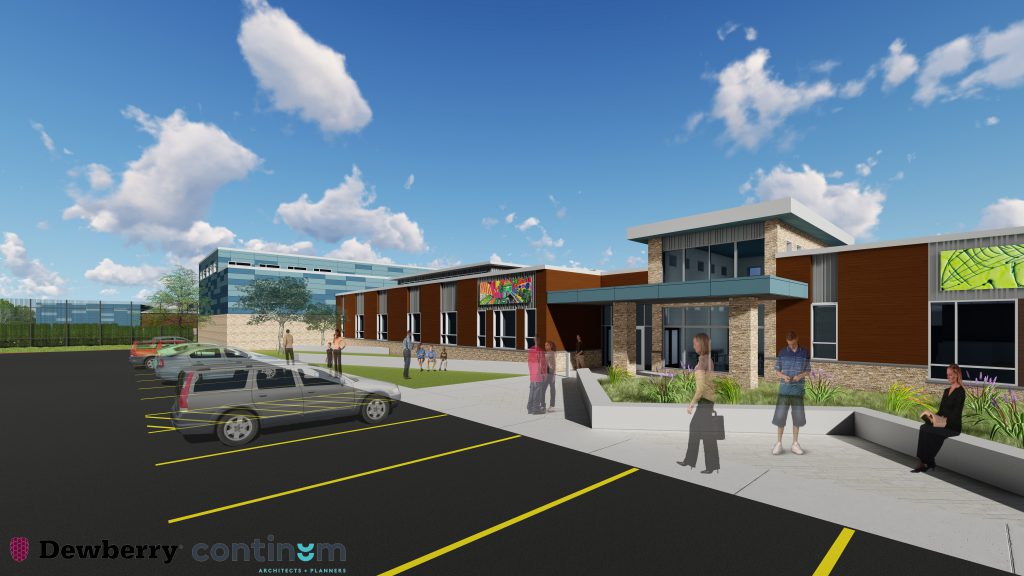Evers Proposes $45.8 Million for Milwaukee Juvenile Facility
County looks to build local facility, stop sending juveniles to Lincoln Hills and Copper Lake.
Gov. Tony Evers is proposing to spend $45.8 million on a new juvenile facility in Milwaukee, budget documents show.
“The facility in this request will assist DOC (Department of Corrections) with working towards meeting the requirements of Act 185 and Act 8, which were created with the intent of eventually converting Lincoln Hills and Copper Lake Schools buildings into adult facilities,” the proposed budget says.
The proposal is part of the proposed 2021-23 state capital budget. The governor recommended a total of $119.1 million in DOC capital spending.
Milwaukee County last year held off on accepting $15.2 million in state funding to develop a secure residential center for juvenile offenders because the funding was inadequate.
The county earlier sought $41.8 million from the state to increase the number of juvenile beds available. It later reduced the proposal to $26 million, and then $17.9 million. Even then, the county would have to kick in $2.7 million of its own funding.
At the time he rejected the $15.2 million, County Executive David Crowley said that the funding gap and continuing operational costs “creates significant sustainability concerns,” as Urban Milwaukee reported.
Crowley said Friday he was encouraged by the governor’s general and capital budget proposals.
The proposed youth facility would be about 59,000 square feet with “housing, food services, health services, education, counseling, vocational training, visitation, recreation, administrative services, and other supporting spaces for a population up to 32 juveniles,” according to the budget proposal.
It would employ about 70 people and cost $7.7 million per year to operate.
Evers also rejected a $45.4 million funding request for a juvenile facility in Outagamie County.
Other DOC capital spending recommended by Evers include the projects listed below.
$18.6 million for a new health services unit (HSU) at Dodge Correctional Institution. Dodge is the prison system’s intake facility and in fiscal 2019 there were 7,178 intakes; the prison’s population is more than 1,600.
The existing 12,300-square-foot facility “is very congested,” the proposed budget says. “There are no medical observation cells or negative pressure rooms. There are several shared areas, such as the treatment room is shared with ER. There are staff doing data entry for electronic medical records in the X-ray room because there is no space for them.”
The new HSU would add 36,558 square feet to the prison.
$14.1 million for a new 26,075-square-foot HSU at Stanley Correctional Institution. The existing 6,000-square-foot HSU is “dramatically undersized” for the 1,600 inmates it must serve, the budget says.
“Issues relating to the current space layout could lead to potential HIPAA compliance concerns and impact SCI’s ability to meet ADA (Americans with Disabilities Act) standards,” the budget says. “The area that is designated for airborne isolation is used to accommodate supply storage due to a lack of designated storage. Holding cells have been converted into exam rooms to accommodate daily patient volumes.”
$12.5 million for a new 22,173-square-foot HSU at Green Bay Correctional Institution.
The existing HSU, in the psychology services treatment center, was built in the 1960s for 749 inmates. The prison now houses 1,043.
“Because the Treatment Center is also used as a housing unit, it lacks the ability to permit expansion to handle the additional HSU workload and the layout does not meet guidelines of a maximum-security HSU,” the budget says. “GBCI is faced with an aging population with increased medical needs, including a high proportion of inmates with psychotropic medications needs. Also, there are a significant number of inmates that require the use of wheelchairs or other assistive devices for mobility….The Treatment Center building has many inconsistent heating, ventilation, and cooling problems which cannot be addressed with the equipment that currently exists.”
$7.8 million for a new 14,000-square-foot HSU at Wisconsin Secure Program Facility.
The existing HSU was built in 1999 and was designed only for emergency care.
The institution was constructed to house all inmates in restrictive housing with the nursing staff going to each unit to provide medical care to inmates. Since original construction, 411 of the 511 beds have transitioned to general population which resulted in the conversion of the existing HSU rooms to meet other needs. The HSU was then remodeled to allow for inmates to come to the health services unit from the housing units to be seen by the providers.
The existing HSU is not adequate, the budget says. “A new health services unit would provide adequate safety and security for providers coming in to provide care for inmates. The institution has recently lost the services of area physical therapists as they do not feel the current area provides for adequate safety. In addition, the staff nurses are seeing patients in the limited converted exam areas. The current area cannot be further expanded as it is surrounded by food service, the restrictive housing unit, and the primary institution corridor; and remodeling has already been maximized.”
$7.1 million for water system infrastructure improvements to reduce radium levels in the water supplied by the Central Generating Plant to the Waupun and Dodge Correctional Institutions, the Bureau of Corrections’ Enterprises Dairy, and the John Burke Correctional Center.
The state Department of Natural Resources notified DOC that the water from the plant exceeded standards established by the state and federal governments, the budget says. DOC and DNR currently are working on a consent order that will require DOC “to meet milestone benchmarks for the design and construction of a water treatment system and water system improvements to reduce radium in the water below drinking water maximum limits.”
$6.2 million for security improvements at Taycheedah Correctional Institution. The major improvement would be 5.400 linear feet of 12-foot-high chain-link fencing.
“The new perimeter fence would be installed on the outside of the existing perimeter fence and shall include microwave detection systems, stun fencing, razor ribbon, and camera and motion sensor enhancements in the buffer area between the existing fence and the proposed perimeter fence,” the budget says.
Maintenance and repair work also would be done on the existing fence.
$4.4 million to expand the HSU and Jackson Correctional Institution from 12,000 square feet to 19,386 square feet.
The existing unit, built to serve 450 inmates, now serves a population of 1,000.
“Many of the rooms in the HSU are not adequate in size to accommodate the number of staff employed to meet medical needs of the men in care,” the budget says. “More workstations are needed for staff. Office equipment needs to be relocated to a place accessible to all, but outside the Medical Program Assistant – Associate’s office. The number of exam rooms is insufficient to care for the now larger JCI population and those who come in from outside facilities. Individuals wait longer to see health care professionals because of the present limits, causing frustration and an increase in complaints. Overcrowding of the waiting room and vestibule during medication distribution hinders movement into and out of the HSU area for both staff and patients going to appointments. Storage areas are inadequate, causing medical equipment to be stored in hallways and in rooms not designated for storage. The current set up of exam rooms located off the hallway leading to the Restrictive Housing Unit cause concerns of HIPAA noncompliance. Doorways are not wide enough to accommodate the wide wheelchairs.”
$2.6 million for space to treat serious mental illness and intellectual disability at Oshkosh Correctional Institution. The building would be 4,000 square feet and would include four classrooms and 10 staff offices.
Residential treatment unit and diversion unit programs have been operating in a limited format “due to insufficient space for group rooms and staff offices,” the budget says.
Gretchen Schuldt writes a blog for Wisconsin Justice Initiative, whose mission is “To improve the quality of justice in Wisconsin by educating the public about legal issues and encouraging civic engagement in and debate about the judicial system and its operation.”
More about the Lincoln Hills and Copper Lake Facilities
- Evers’ Prison Plan Receives Mixed Reviews - WPR Staff - Feb 21st, 2025
- ‘First of its Kind in Wisconsin’ Collaboration Will Support Disabled Incarcerated Youth - Andrew Kennard - Dec 12th, 2024
- MKE County: Tight Budget Forces Difficult Vote on Housing, Juvenile Justice - Graham Kilmer - Nov 1st, 2024
- Letters from Evers, Republicans Show Clash on Juvenile Corrections - Andrew Kennard - Aug 17th, 2024
- Following Counselor Death, Staff, Family Plead for Help At Lincoln Hills - Andrew Kennard - Aug 16th, 2024
- Lawmakers Grill Wisconsin Prison Officials Over Safety, Employee Death at Youth Facility - Sarah Lehr - Aug 7th, 2024
- Future of Lincoln Hills Remains In Limbo - Isiah Holmes - Apr 12th, 2024
- MKE County: County Youth In State Prisons Declining Again - Graham Kilmer - Jan 15th, 2024
- Legislative Committee Okays $6 Million for 2nd Juvenile Facility - Devin Blake - Oct 1st, 2023
- Some Progress, Still Problems at Lincoln Hills - Isiah Holmes - Jul 9th, 2023
Read more about Lincoln Hills and Copper Lake Facilities here
Political Contributions Tracker
Displaying political contributions between people mentioned in this story. Learn more.




















